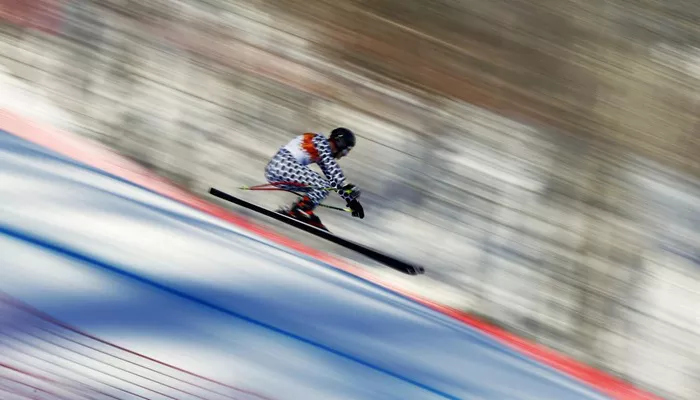Speed skiing is one of the most exhilarating and challenging disciplines in the world of winter sports. Unlike traditional skiing, it emphasizes pure, straight-line velocity, pushing athletes and enthusiasts to their physical and mental limits. This beginner’s guide aims to introduce you to the essential aspects of speed skiing, helping you start safely and effectively.
What Is Speed Skiing?
Definition and History
Speed skiing is a specialized alpine skiing competition where participants attempt to ski downhill as fast as possible. Originating in the early 20th century, it became an official discipline recognized by the Fédération Internationale de Ski (FIS) in the 1960s. Early contests took place on simple hills; today’s speed tracks are carefully groomed, icy, and steep, allowing for maximum acceleration.
Typical Speeds Achieved
Professional speed skiers can reach speeds of over 200 km/h (124 mph). Beginners should aim for controlled progression, starting from lower speeds and advancing carefully with proper coaching and practice.
Essential Gear for Speed Skiing
1. Skis
Speed skis are longer, heavier, and more stable than regular alpine skis. They typically measure between 238-240 cm in length. Their aerodynamic design minimizes vibration and maximizes control at high speeds.
2. Boots and Bindings
Boots should offer a stiff flex to provide precise control. Bindings must have high DIN settings to withstand the force of rapid descents.
3. Helmet and Protective Gear
A specialized aerodynamic helmet is crucial. Speed suits, spine protectors, and impact-resistant pads further enhance safety.
4. Other Essentials
Goggles with anti-fog lenses, aerodynamic poles, and body-hugging race suits are standard. Gloves should balance warmth with a streamlined fit.
Choosing the Right Location
Best Training Grounds
Beginners should practice at resorts with safe, wide, and steep slopes. Look for resorts with specially designed speed skiing tracks. Facilities offering speed camps or training programs are ideal for rapid progression.
Importance of Groomed Slopes
Perfectly groomed and icy conditions are essential. Rough or powdery slopes slow down the skis and introduce risk factors due to unpredictability.
How to Start Speed Skiing Safely
Take Professional Lessons
Enrolling in a Skiing Guide program is highly recommended. Experienced instructors provide structured progression paths, crucial for mastering basic and advanced skills.
Start Slow
Begin at moderate speeds. Practice body positioning and braking techniques before attempting steeper slopes or higher speeds.
Learn Correct Stance
Maintain a low tuck position. Knees bent, chest close to thighs, poles trailing behind. This minimizes air resistance and maintains stability.
Key Techniques in Speed Skiing
1. The Tuck Position
The foundation of speed skiing. A proper tuck reduces frontal area and drag. Head stays low, spine aligned with skis, elbows tucked in.
2. Weight Distribution
Shift weight slightly forward to increase ski pressure, improving grip and stability. Maintain balance over ski centers for best control.
3. Line Selection
Choose the straightest, most direct line down the slope. Avoid unnecessary turns or shifts. Efficiency in movement directly translates into higher speeds.
4. Controlling Speed
Use slight edge engagement or controlled snow plowing to manage speed. Learn how to brake safely without losing balance.
Safety Tips for Beginners
Understand the Risks
Speed skiing carries inherent risks. High speeds amplify even small mistakes. Always train within your comfort zone and capabilities.
Inspect Equipment Regularly
Check bindings, skis, boots, and protective gear before every run. Malfunctions can have catastrophic consequences at high speeds.
Know the Weather Conditions
Good visibility, hard-packed snow, and low wind conditions are ideal. Avoid training in heavy snowfalls, fog, or blizzards.
Common Mistakes to Avoid
1. Skipping Basics
Jumping into high speeds without mastering the basics can lead to accidents. Build a strong technical foundation first.
2. Inadequate Warm-Up
Always perform dynamic stretches and light runs before attempting full-speed descents. Cold muscles are prone to injuries.
3. Overestimating Abilities
Progress gradually. Overconfidence often leads to crashes. Listen to your coach and body signals at all times.
Training Programs for Speed Skiing
Off-Season Conditioning
Strength training, cardiovascular endurance, balance exercises, and flexibility routines prepare the body for intense physical demands.
On-Snow Drills
Practice starts, controlled tucks, line optimization, and braking techniques during on-snow sessions. Video analysis helps refine techniques.
Fitness Requirements for Speed Skiers
Strength and Power
Strong quadriceps, hamstrings, glutes, and core muscles are vital. Focus on explosive power movements such as squats and lunges.
Endurance and Stamina
Cardiovascular conditioning ensures sustained performance. Interval training, cycling, and running are beneficial.
Balance and Coordination
Exercises like slacklining, yoga, and balance board training improve proprioception and body control on skis.
Final Tips for Speed Skiing Beginners
1. Set Realistic Goals
Focus on personal improvement rather than immediate high speeds. Celebrate small milestones and skill achievements.
2. Maintain Equipment
Proper tuning of skis, waxing, and maintaining edge sharpness are crucial for optimum performance and safety.
3. Stay Passionate and Patient
Progress takes time. Passion for the sport and consistent practice will yield the best results over time.
Conclusion
Speed skiing offers unmatched thrills and a unique sense of accomplishment. By following this guide, taking proper lessons, investing in the right gear, and prioritizing safety, you can embark on an exciting journey into the world of speed skiing. Always remember: mastery comes with patience, practice, and respect for the mountain.

